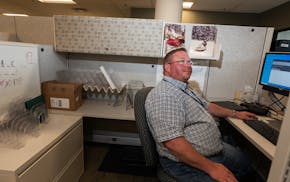Minneapolis Public Schools has set out to erase a $75 million budget deficit without a highly charged proposal to close or merge schools.
The potential elimination of as many as 102 special education assistants, however, has ignited protests.
In St. Paul, district officials intend to tap $32 million in rainy-day funds to avoid deep classroom cuts — yet still manage to boost staffing overall — as it fills a $51 million gap of its own.
All this comes a year after both school systems grappled with deficits of more than $100 million heading into the current 2024-25 school year.
A year ago, Minneapolis had included in its budget-balancing maneuvers the use of $55 million in reserves, and while now it plans to tap a more modest $14.5 million, Superintendent Lisa Sayles-Adams has cautioned that the coming weeks will bring some "very challenging decisions."
Tougher action delayed
In December 2023, Minneapolis launched a so-called district "transformation process" that was geared, in part, to resolve excess building capacity issues. A district built to serve about 45,000 students at that point had only about 28,500.
This year, enrollment ticked up to 28,882.
Potential closings and mergers are to be part of the transformation review, but the work last fall was limited to a physical space study, community engagement efforts and recommendations about a possible expansion of Spanish dual-language offerings.
Officials indicated last week they didn't have the time to take up weightier questions about closings and mergers.
"Considering the significant impact on staff, families and the broader community, it is not possible to operationalize changes for the 2025-26 school year," a district statement said.
As for the current 2025-26 budget proposal, Sayles-Adams has said the district will continue to invest in library media specialists, fifth-grade instrumental music and efforts to get struggling students back on track at high-poverty schools.
Class size limits that were exceeded at some schools last fall, drawing sharp criticism from parents and teachers, will be adhered to in 2025-26, she said. Board members were reminded in December that voters passed extra funding for schools and that classroom overcrowding should be eased.
The district says it is still working out how many total positions will be cut. But the special education assistants have risen in anger, first at a rally outside district headquarters and then inside the boardroom two weeks ago as school board members heard the latest of a series of budget updates.
Mikel Herb, a special education assistant (SEA) at Sanford Middle School, told rally-goers that the SEAs were "not the problem with the budget," but essential to ensuring that classrooms are a "safe, welcoming and warm place for students."
Daily activities can include providing kids with core academic and social-emotional support, plus calming students who act out, union leaders say.
The district said that the special education cuts will affect students who receive such services for 60% or more of the school day, but still will leave those classrooms with one teacher and two special education assistants, in accordance with state guidelines.
The reductions will save the district about $6.8 million, officials say.
But expect the fight to continue. As protesters filed out of the boardroom two weeks ago, they chanted: "We'll be back ... Do the right thing. Do the right thing."
Help wanted in St. Paul
St. Paul's planned use of reserves would leave its rainy day fund at the minimum required by board policy.
Administrators were told to craft a budget that would target layoffs outside of schools and sustain efforts to increase enrollment and decrease student absenteeism.
Some schools still would see some staff reductions, but the overall number of school employees districtwide will increase in 2025-26, the district has said.
Special education is one of the reasons why.
St. Paul has been seeing annual increases of 400 to 500 students who qualify for special education and related services over the past several years, and is expecting to dedicate up to $7 million in new funding to such programming in 2025-26, said Assistant Superintendent Heidi Nistler.
Those students who receive services for 60 % or more of the day can expect to have one teacher and two special education assistants, plus an additional support staff person for every two classrooms, she added.
The state's second-largest district expects to report later this spring how many positions are being cut per bargaining unit.
Final budget approvals are expected in both St. Paul and Minneapolis on June 10.

On the campaign trail, Elon Musk juggled drugs and family drama
In South Carolina, Walz says Democrats 'need to change the attitude'

Grand Avenue reconstruction unearths streetcar tracks, showing St. Paul's past

What we know about state workers' return to office next week

